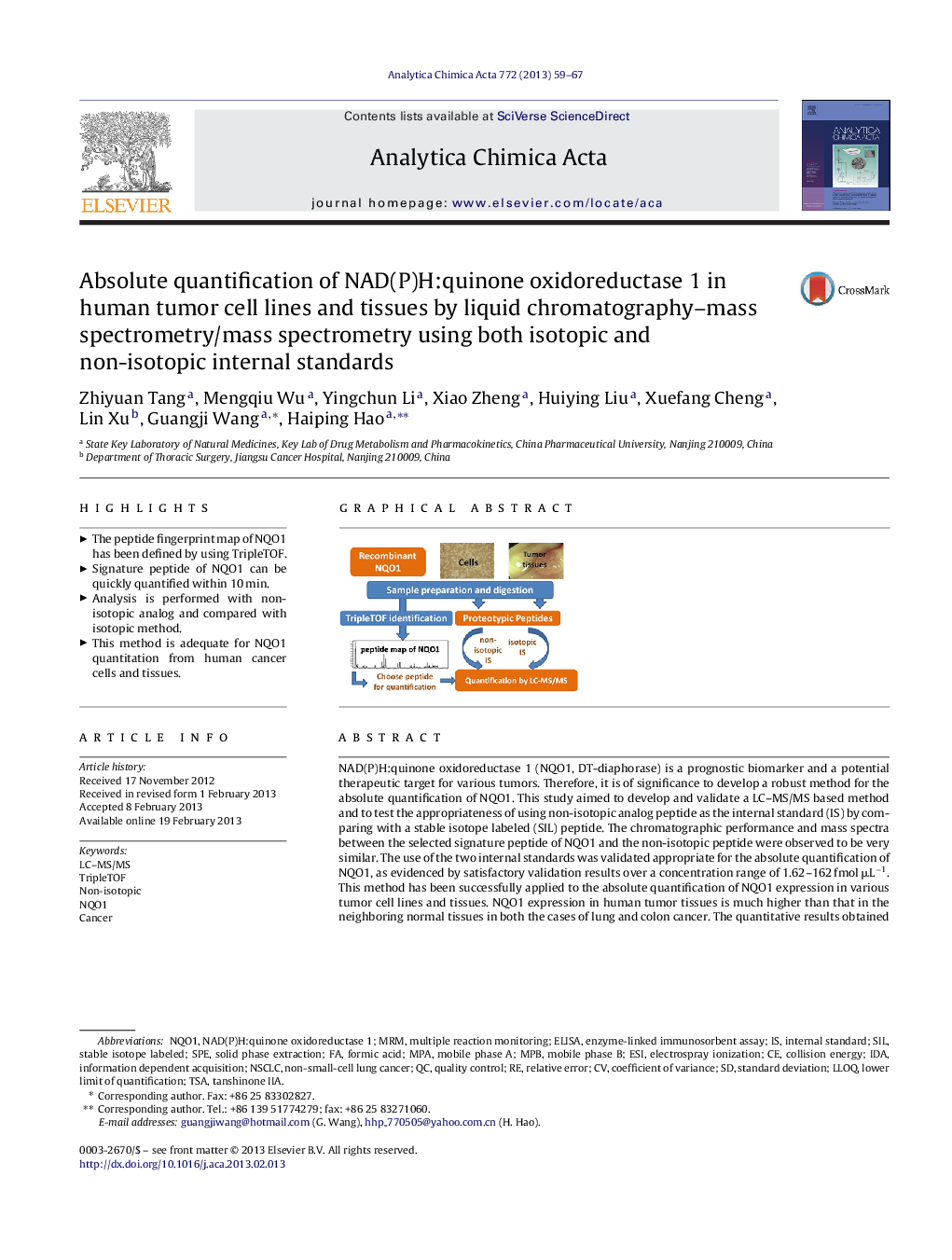| Article ID | Journal | Published Year | Pages | File Type |
|---|---|---|---|---|
| 1165079 | Analytica Chimica Acta | 2013 | 9 Pages |
NAD(P)H:quinone oxidoreductase 1 (NQO1, DT-diaphorase) is a prognostic biomarker and a potential therapeutic target for various tumors. Therefore, it is of significance to develop a robust method for the absolute quantification of NQO1. This study aimed to develop and validate a LC–MS/MS based method and to test the appropriateness of using non-isotopic analog peptide as the internal standard (IS) by comparing with a stable isotope labeled (SIL) peptide. The chromatographic performance and mass spectra between the selected signature peptide of NQO1 and the non-isotopic peptide were observed to be very similar. The use of the two internal standards was validated appropriate for the absolute quantification of NQO1, as evidenced by satisfactory validation results over a concentration range of 1.62–162 fmol μL−1. This method has been successfully applied to the absolute quantification of NQO1 expression in various tumor cell lines and tissues. NQO1 expression in human tumor tissues is much higher than that in the neighboring normal tissues in both the cases of lung and colon cancer. The quantitative results obtained from the isotopic and non-isotopic methods are quite similar, further supporting that the use of non-isotopic analog peptide as internal standard is appropriate and feasible for the quantification of NQO1. By comparing with a classical isotopic IS, the present study indicates that the use of a non-isotopic peptide analog to the proteotypic peptide as the internal standard can get equal accuracy and preciseness in measuring NQO1. The universal applicability of the non-isotopic IS approach for the quantification of proteins warrants further research.
Graphical abstractFigure optionsDownload full-size imageDownload as PowerPoint slideHighlights► The peptide fingerprint map of NQO1 has been defined by using TripleTOF. ► Signature peptide of NQO1 can be quickly quantified within 10 min. ► Analysis is performed with non-isotopic analog and compared with isotopic method. ► This method is adequate for NQO1 quantitation from human cancer cells and tissues.
